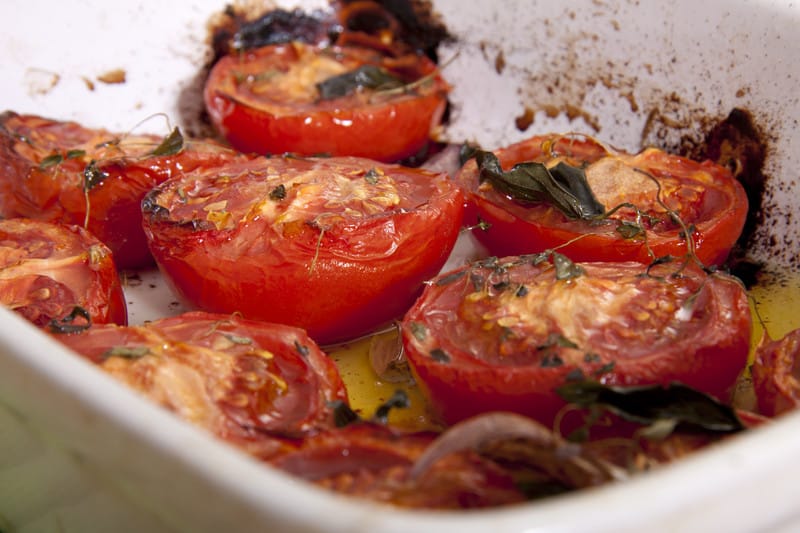Ways to cook tomatoes, try: fry, sauté, roast, broil-grill, stew, and steam, also make tomato gratin, stuffed tomatoes, and tomato soup.
The tomato is a fruit used as a vegetable in savory dishes for its juicy texture and mildly sweet, rich taste.

Tomatoes are at their absolute best vine-ripened towards the end of summer. The peak season for fresh tomatoes is early summer through mid-fall.
Favorite tomato recipes
How to Make Tomato Juice — Simply
How to Make Tomato Sauce –Herbs or Vegetables Added
How to Sun Dry and Oven Dry Tomatoes
How to Can Tomatoes for Beginners
Kitchen Helpers from Amazon:
- Oster Vegetable Steamer
- Chef’s Knives Set of 6
- EZ Off Jar Opener for Weak Hands
- Pepper Core Remover Stainless Steel
- Kitchen Utensils – Set of 35
Tomato serving suggestions
- Use tomatoes raw or cooked.
- Eat tomatoes raw without dressing or added to salads, appetizers, and sandwiches.
- Use tomatoes raw in salads with Mozzarella, basil, olive oil, and seasoning. Add tomato to salads after tossing the salad with dressing that way the tomato won’t thin the dressing.
- Use raw currant and cherry tomatoes as a snack.
- Use beefsteak tomatoes as a garnish or hollow them out and stuff them with shrimp, potato salad, cold salmon, cottage cheese, or mashed curried egg; serve hot or cold.
- Try a just-picked tomato quartered and add it to a mixed green salad or halved and stuffed with egg salad or shrimp salad.
- A tomato sliced and layered on a sandwich is a summer standard.
- Mince tomatoes with onions, cilantro, and chiles to make salsa almost every day during the summertime.
- Use tomatoes cooked in soups, stews, sauces, pasta, risotto, and omelets.
- Gazpacho is a spicy cold soup of tomatoes, sweet peppers, cucumbers, and onions.
- To grill a tomato, cut it in half and cover the cut surface with olive oil, pepper, and sugar, then grill for 5 minutes.
- Glaze a tomato with wine and brown sugar then broil.
- Green tomatoes can be eaten when cooked: sautéed, fried, or used in marinades.
- The French use tomatoes in ratatouille. The Moroccans favor a tomato and green pepper salad. The Spanish use tomatoes in gazpacho. The Italians claim tomatoes for sauces and pasta.
Beefsteak tomato serving suggestions
- Eat the beefsteak raw and sliced on sandwiches and hamburgers.
- Dice the beefsteak for salads or salsas or to top chili.
- The beefsteak can be broiled or grilled or stuffed or used in stews or casseroles or gumbos and jambalayas.
Tomato types by use
There are three major tomato categories based on use: cherry or miniature, slicing and eating, and cooking.
- Cherry or miniature tomatoes are the smallest tomatoes ranging in size from ¾ – 1½ inches (1.9-3.8 cm) in diameter. They come in hues of red, yellow, and zebra-stripe green. Cherry tomatoes are used in salads or for snacking.
- Slicing tomatoes, also called standard and beefsteak tomatoes, are generally the largest, juiciest, most flavorful tomatoes. These tomatoes are usually a slightly squat shape, have large seed and juice-filled cavities, and can grow up to 6 inches (15 cm) in diameter. They come in both early-season and longer-developing varieties. The most popular color is red, but you will find slicing tomatoes in a rainbow of colors. Because they have longer growth periods, their taste and texture are greatly enhanced.
- Cooking tomatoes, also called paste tomatoes, are usually oblong or pear-shaped, with meatier, less juicy flesh than the slicing and eating varieties. Cooking tomatoes are usually red or yellow, thick fleshed (so they hold their shape when cooked), and sweet flavored. On the vine, they generally ripen at the same time providing quantities for canning and sauces.
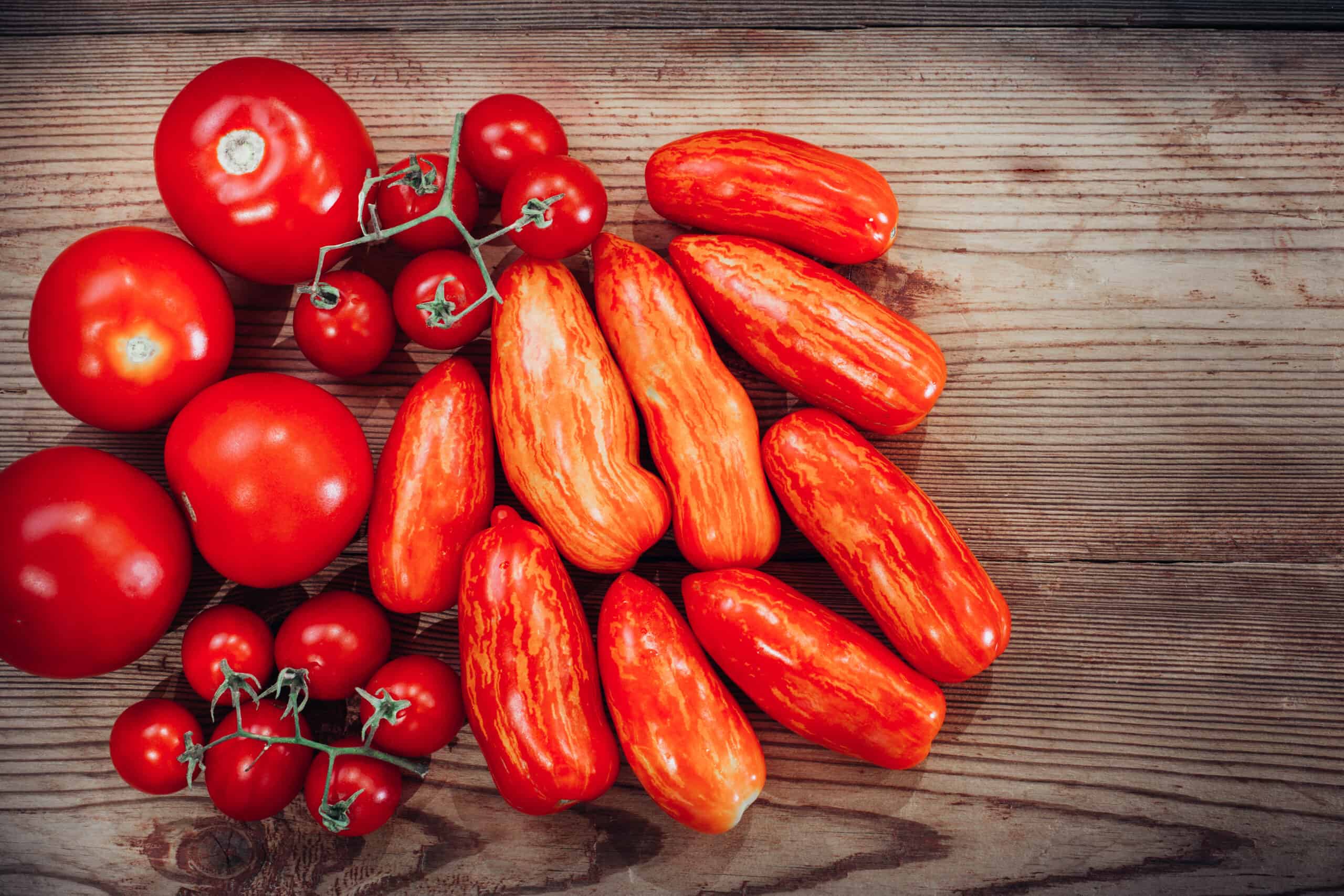
How to choose tomatoes
- Select tomatoes that are firm and smooth with no wrinkles or cracks.
- A tomato that is ready to use will be fragrant, heavy for its size, and yield to the light pressure of your fingers.
- Avoid tomatoes that are soft, mottled, or bruised.
- Unripe fruit can be ripened by placing them, stem-side down in a pierced paper bag for several days at room temperature.
- Cold temperatures will make the flesh pulpy and destroy the flavor.
Tomato flavor
- The flavor of a tomato depends a lot on when it’s harvested, its skin texture and flesh, and its sugar and water content. Variety and nature have a lot to do with the taste of a tomato.
- Supermarket tomatoes are picked green and ripened with ethylene gas or in special warming rooms. They rarely have the texture, aroma, and taste of vine-ripened tomato.
- Hydroponic tomatoes are grown in water without soil in greenhouses and often lack flavor.
How to store tomatoes
- Tomatoes will keep for a week at room temperature.
- Do not leave them in direct sunlight. Overripe tomatoes will keep in the refrigerator for 2 or 3 days but their flavor will be compromised. Let them sit out of the refrigerator for 30 minutes before using.
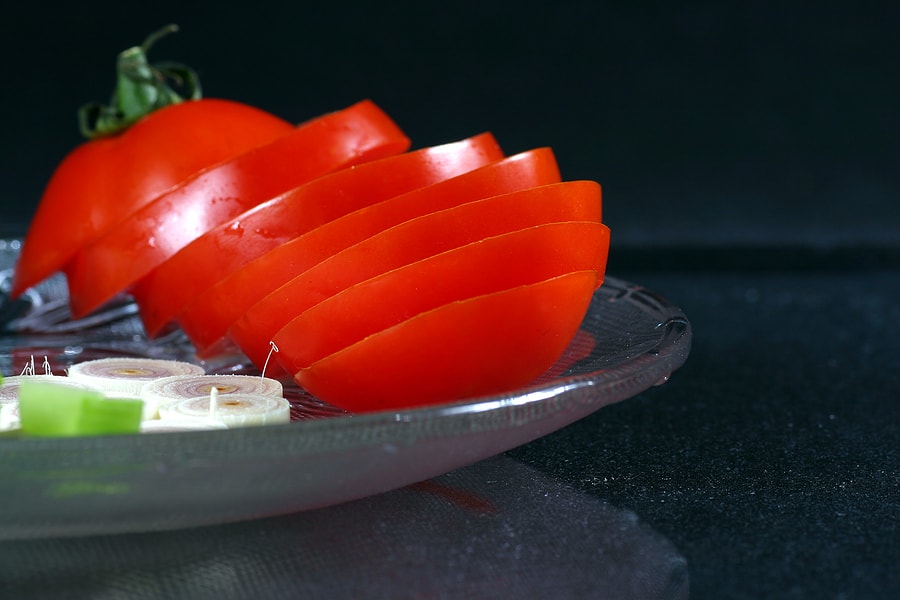
How to prep tomatoes
- Wash tomatoes before using them.
- To peel an uncooked tomato: Cut an “x” in the blossom end of the tomato and then immerse it in boiling water for 15 to 30 seconds then let it cool or rinse it under cold water; the skin will slip off.
- To seed a tomato: Cut the tomato in half horizontally; hold the cut side down over a bowl and squeeze the halves to extract the seeds and juice; remove the remaining seeds by hand.
- To Pare a tomato: Cut a circle around the stem and remove the hard part.
Tomato cooking tips
- Cook tomatoes slowly over low heat. Prolonged cooking over high heat will make the sauce difficult to digest.
- To soften the acidity of tomatoes, add sugar or honey.
- Avoid cooking tomatoes in aluminum pots; their acid will make them take on an unpleasant metal taste.
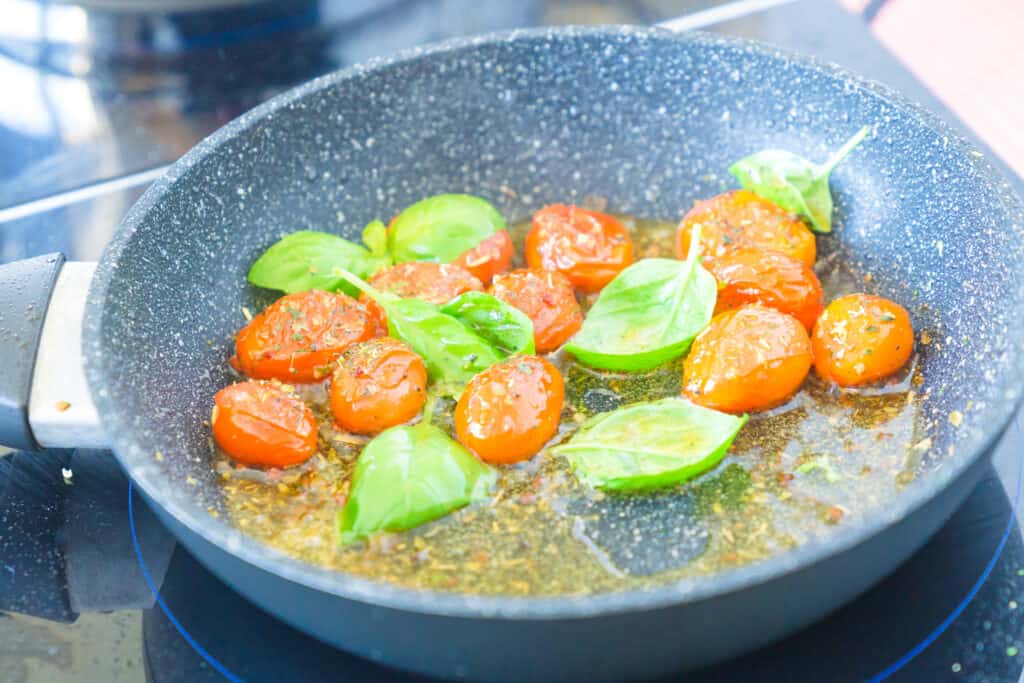
How to fry tomatoes
- Cut medium, firm unpeeled green tomatoes into 1/2-inch slices.
- Sprinkle slices with salt and black pepper and let stand for 15 minutes.
- In separate bowls place 1/4 cup milk, 1/2 cup flour, 2 lightly beaten eggs, and 2/3 cup fine dry breadcrumbs.
- Heat 1/4 cup cooking oil in a skillet over medium heat.
- Dip the tomato slices in milk, then flour, then eggs, then breadcrumbs.
- Fry the coated tomato slices in hot oil over medium heat on each side until brown, about 4 to 6 minutes. Reduce heat to medium-low if battered slices cook too quickly.

How to sauté tomatoes
- Cut the ends off the tomatoes and then cut into ½ inch slices; cut cherry tomatoes in half.
- In a skillet heat 1 tablespoon olive oil over medium heat for 2 minutes.
- Add finely chopped onion, minced garlic clove, and 1 teaspoon snipped fresh thyme.
- Cook onion and garlic until the onions are tender, about 2 to 3 minutes.
- Add tomatoes to skillet and season with salt and black pepper.
- Cook and stir for 1 to 2 minutes or until tomatoes are just warmed.
- Serve hot.
How to roast-bake tomatoes
- Preheat oven to 425 degrees F.
- Drizzle a baking pan with olive oil.
- Toss cherry tomatoes with olive oil and season to taste with salt and freshly ground black pepper.
- Place tomatoes on a baking pan.
- Roast, uncovered, until just soft, about 10 to 15 minutes.
How to broil-grill tomatoes
- Slice off the ends of the tomatoes.
- Give each tomato a slight squeeze to loosen the seeds.
- Sprinkle with salt and set on an absorbent paper towel.
- Blend breadcrumbs with a bit of olive oil and seasoning.
- Spread the breadcrumb-olive oil mix over the drained tomatoes.
- Place the tomatoes on a rack and broil about 5 inches from the heat.
- Raise the rack as the tomatoes cook through; the crumbs should be just brown when the tomatoes are finished cooking.
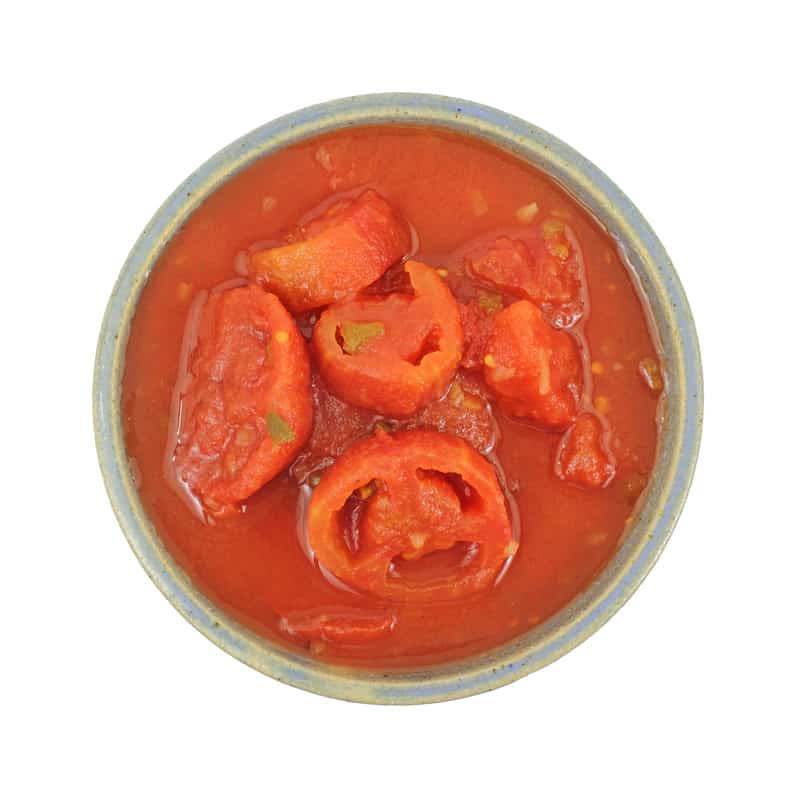
How to stew tomatoes
To stew 4 pounds of tomatoes:
- Peel the tomatoes.
- Place in a skillet with 4 tablespoons of butter.
- Cover and cook slowly until the tomatoes break down.
- Add salt to taste and a teaspoon of sugar.
- Cook until well-blended, about 10 minutes.
Tomatoes can be stewed with onions, basil, lemon, and garlic.
How to steam tomatoes
Cherry tomatoes are easily steamed.
- Pour boiling water over the tomatoes
- Let them stand 1 minute then plunge them into ice water.
- The tomatoes will peel easily. Peel them.
- Place the peeled tomatoes in a steamer basket in a pot over water; the water should not touch the tomatoes. Add salt, a few teaspoons of butter and salt to the water.
- Cover the pot and bring the water to a boil.
- Steam over hot water until the tomatoes are heated through.
- Pour the tomatoes into a heated serving dish and sprinkle with chopped till.

How to make tomato gratin
- Preheat the oven to 350 degrees F.
- Peel the tomatoes, slice them, and remove the seeds. (You also can use plum tomatoes halved; give them a squeeze to remove the seeds.)
- Layer them in a 2-quart baking dish with grated breadcrumbs and a little butter.
- Season with salt and freshly ground pepper to taste.
- Add breadcrumbs across the top and dot with butter.
- Bake for about 25 to 30 minutes until the topping is just brown.
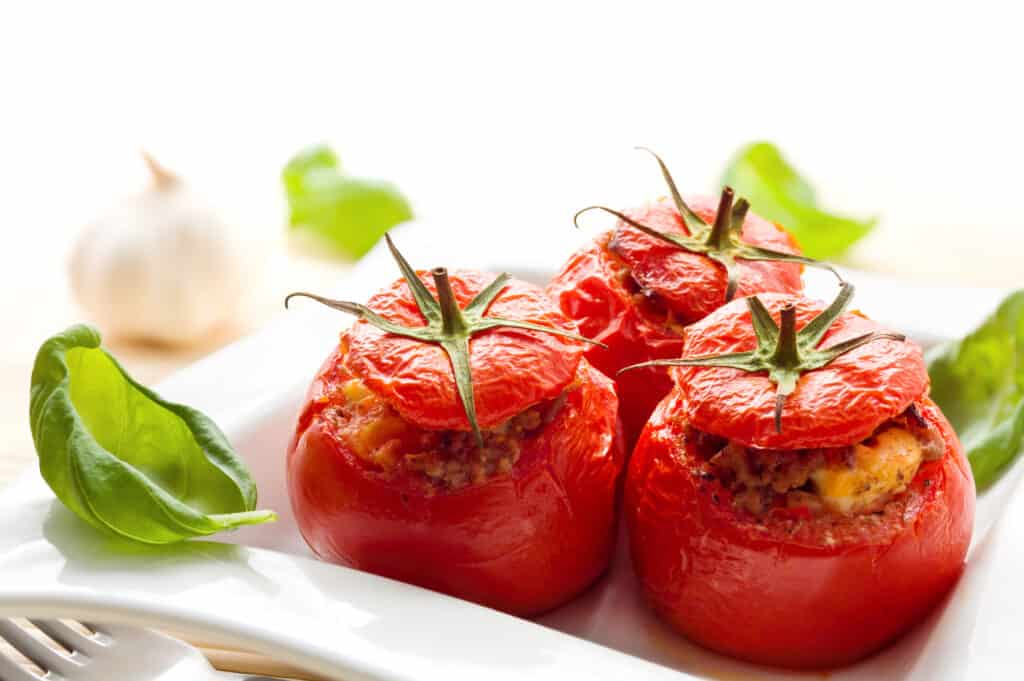
How to stuff tomatoes
- Preheat the oven to 450 degrees F.
- Cut ¼ inch off the stem end of the tomato and set it aside.
- Scoop out the interior of the tomato with a spoon; leaving a ¼-inch thick wall.
- Discard the core and seeds; mix the pulp with cooked brown rice, grated Jack or mozzarella cheese, garlic, salt, and pepper to taste.
- Sprinkle the inside of the tomato with salt and pepper and stuff the tomato with the rice mixture; replace the top.
- Place in a roasting pan and roast for 30 to 40 minutes until the tomato is just shriveled and the stuffing hot.
- Test the doneness by inserting a metal skewer into the center; the skewer should be warm or hot when you withdraw it.
- Serve hot or at room temperature.
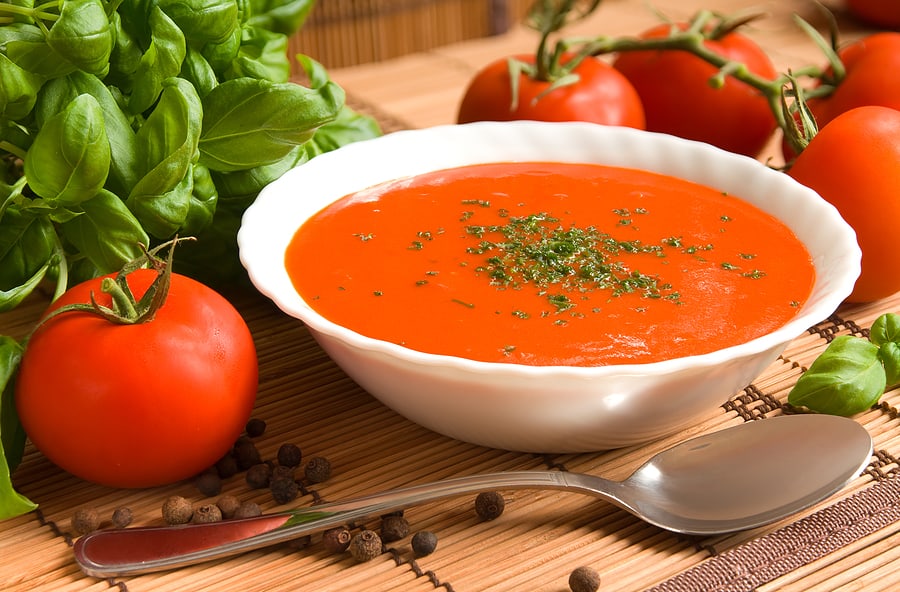
How to make tomato soup
- Sauté a finely chopped onion in butter until soft.
- Add 6 medium-large ripe tomatoes, peeled, seeded, and chopped.
- Add ¼ teaspoon baking soda and salt and pepper to taste
- Cook for 10 to 12 minutes or until thickened and paste-like
- Remove from heat and stir in 1 cup of heavy cream. (If you want a creamy soup, purée the mixture with cream in a food processor.)
- Taste for seasoning and reheat.
- Serve hot or refrigerate.

How to make tomato and basil bruschetta
- Core one pound of tomatoes and squeeze away most of the seeds.
- Chop the tomatoes.
- Combine the tomatoes with basil and olive oil; toss to combine. Set aside.
- Place slices of rustic bread on a broiler rack and set the rack about 4 inches from the heat; grill or broil the bread until lightly brown on both sides.
- While it’s still hot, rub the bread with a clove of garlic and drizzle with lots of olive oil then sprinkle with salt.
- Put the tomato mixture on the bread and sprinkle with pepper.
- Serve.
Beefsteak tomatoes
Beefsteak tomatoes are meaty and tasty in an old-fashioned tomato-flavorful way. Serve beefsteak tomatoes on a tomato sandwich, BLT, or picnic-sized hamburger.
The beefsteak is perfect for a stand-alone tomato side dish: slice, lightly drizzle with olive oil, sprinkle to taste with sea salt and shredded basil, and serve.
How to choose a beefsteak tomato
- Look for beefsteaks that are firm but give to gentle pressure and are smooth-skinned.
- Avoid any tomato that is too soft, wrinkled, has broken skin, or is blotchy colored.
- Size is not the end-all with beefsteaks. A flavorful beefsteak can weigh 8 to 12 ounces.
How to store a beefsteak tomato
- Do not refrigerate tomatoes. Keep tomatoes at room temperature.
- If a tomato is a tad green, it will ripen on the counter at room temperature.
Tomato flavor partners
- Tomatoes have a flavor affinity for basil, blue cheese, cucumbers, feta, fish, garlic, leeks, mint, mozzarella, onion, oregano, pasta, poultry, ricotta, shellfish, stir-fries, veal, garlic, shallots, basil, tarragon, thyme, bay leaf, oregano, and cumin.
- Tomatoes are easily combined with olives, peppers, and eggplant.
Tomato nutrition
- Tomatoes are a good source of vitamin C and potassium and also supply folic acid and vitamin A.
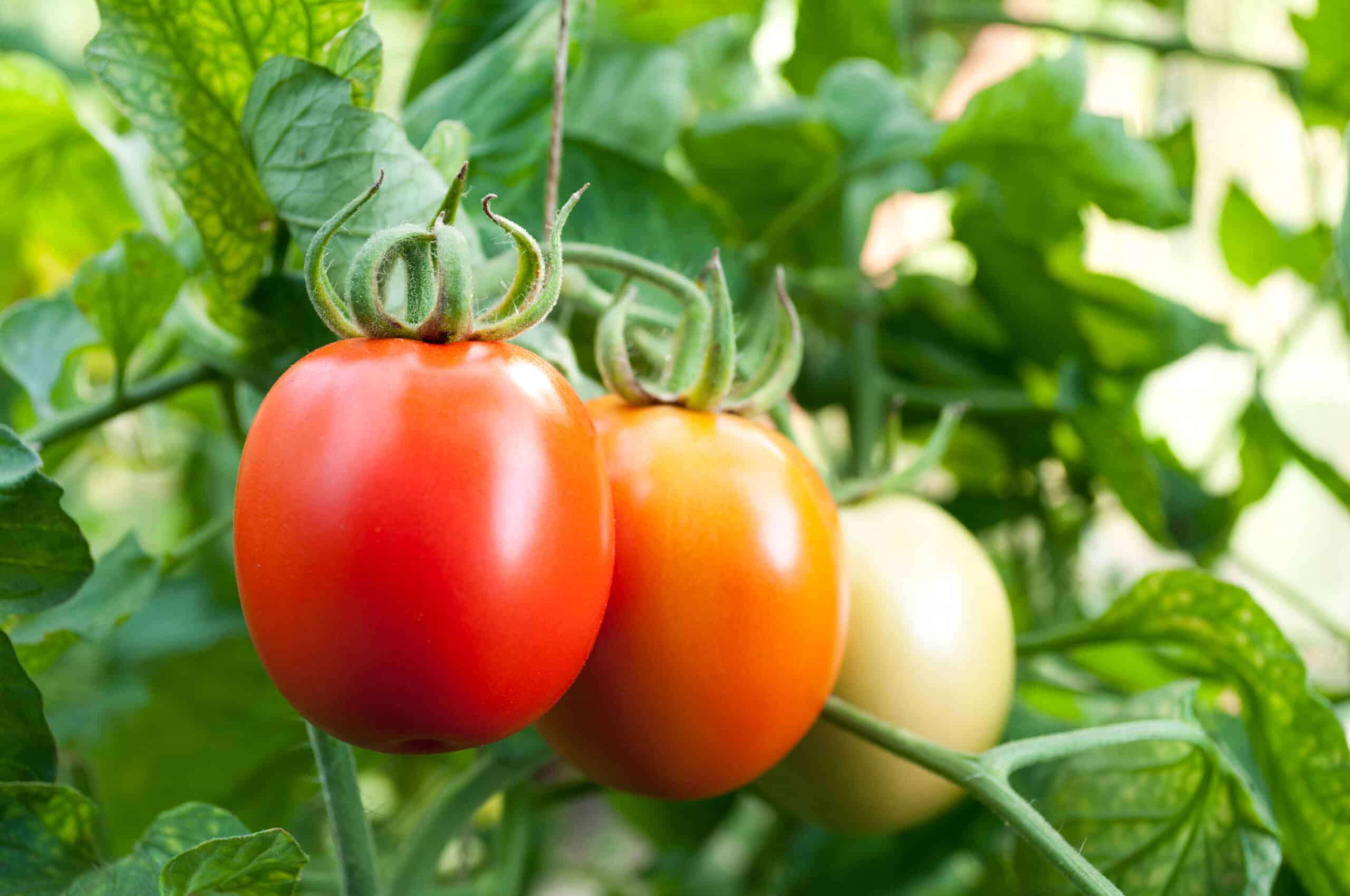
Get to know tomatoes
- There are more than 1,000 named tomato varieties.
- The tomato is a short-lived perennial in tropical regions and an annual in temperate regions. It requires long periods of sunshine and warm temperatures to ripen.
- The tomato is a sprawling plant that can not climb but is commonly referred to as a vine. It has aromatic, compound leaves.
- The tomato is native to the Andean regions of north and central South America in Ecuador, Peru, and Bolivia. The first tomatoes resembled what we know today as cherry tomatoes. The tomato spread to Central America, Mexico, and North America along with corn during migrations more than 2,000 years ago.
- The word tomato is derived from tomalt, the name of this fruit in the Nahuatl, language of the Aztecs. The tomato was cultivated by the Incas and Aztecs as early as 700 A.D.
- The tomato first traveled to Europe around 1523. It was used mostly as an ornamental plant in Europe until the seventeenth century. Europeans first thought the tomato to be poisonous, probably because its unripe fruit and leaves contain a toxic alkaloid.
- The Italians—who called the tomato pomodoro or golden apple—were the first Europeans to adopt it in their cookery.
The botanical name of the tomato is Lycopersicon esculentum.
Also of interest:
How to Harvest and Store Tomatoes
Tomato articles at Harvest to Table:
How to Plant and Grow Tomatoes
How to Choose a Tomato for Your Garden
Growing Tomatoes in Containers
Growing Early Season Tomatoes for Great Taste
Epsom Salt, Milk, and Organic Fertilizers for Tomatoes and Peppers
How to Prevent Blossom Drop – Tomatoes and Peppers
How to Harvest and Store Tomatoes
Nine Ways to Cook and Serve Tomatoes
Tomato Sauce–Basic, Herbed, or Vegetables Added
How to Make Tomato Juice Simply
How to Home Can Tomatoes for Beginners
How to Sun Dry and Oven Dry Tomatoes
Tomato Growing Problems Troubleshooting
How to Prevent Tomato Blossom Drop
How to Identify Early Blight, Late Blight, and Leaf Spot
Tomato Hornworm Organic Pest Control
Garden Planning Books at Amazon:
- Tomato Grower’s Answer Book
- Vegetable Garden Almanac & Planner
- Kitchen Garden Grower’s Guide Vegetable Encyclopedia
- Vegetable Garden Grower’s Guide
Articles of interest:
Best Herbs for Container Growing
Garden Planning Books at Amazon:
- Vegetable Garden Almanac & Planner
- Kitchen Garden Grower’s Guide Vegetable Encyclopedia
- Vegetable Garden Grower’s Guide
- Tomato Grower’s Answer Book
More kitchen tips:
Bring your harvest to the table. Kitchen prep tips and easy recipes for the vegetables you grow. Click below for vegetable prep and recipes you can use now.
- Almonds
- Apples
- Apricot
- Aprium
- Artichoke
- Arugula
- Asparagus
- Avocado
- Bamboo Shoots
- Banana
- Basil
- Beans, Dried
- Beans. Long
- Beans, Shell
- Beans, Snap
- Beets
- Bitter Melon
- Blackberry
- Bok Choy
- Broccoli
- Broccoli Raab
- Brussels Sprouts
- Cabbage
- Cardoon
- Carrots
- Cauliflower
- Celeriac
- Celery
- Chard
- Chayote Squash
- Cherimoya
- Cherries
- Chestnut
- Chickpea
- Chinese Cabbage
- Chives
- Cilantro
- Citron
- Clementine
- Collards
- Coriander
- Corn, Sweet
- Corn, Baby
- Corn Salad, Mache
- Cranberry
- Cress
- Cucumber
- Daikon
- Dandelion
- Dill
- Eggplant
- Endive, Belgian
- Endive and Escarole
- Fava Beans
- Fig
- Florence Fennel
- Garlic
- Ginger
- Grapefruit
- Grapes
- Guava
- Horseradish
- Jerusalem Artichoke
- Jicama
- Jujube
- Kale
- Kiwifruit
- Kohlrabi
- Kumquat
- Leeks
- Lemongrass
- Lemons
- Lettuce
- Lime
- Mache (Corn Salad)
- Mandarin Orange
- Mango
- Maple Syrup
- Marjoram
- Melons
- Michihili
- Mint
- Mizuna
- Mushrooms
- Mushrooms, Cremini
- Mustard Greens
- Napa Cabbage
- Nectarine
- Okra
- Olives
- Olive oil
- Onions
- Oranges
- Oregano
- Parsley
- Parsley Root
- Parsnips
- Passion Fruit
- Pawpaw
- Peaches
- Pears
- Peas, Garden Snap
- Peas, Snow
- Pei Tsai
- Peppers, Chili
- Peppers, Sweet
- Persimmon
- Pineapple
- Pineapple Guava
- Plantain
- Plums
- Pluots
- Pomegranate
- Potatoes
- Prickly Pear
- Pumpkin
- Quince
- Radicchio
- Radishes
- Raspberries
- Rosemary
- Rhubarb
- Rutabaga
- Sage
- Salsify
- Sauerkraut
- Savory
- Shallots
- Sorrel
- Spinach
- Squash, Summer
- Squash, Winter
- Strawberries
- Sunchokes
- Sunflower
- Sweet Potato
- Swiss Chard
- Tangerine
- Taro
- Tarragon
- Thyme
- Tomatillo
- Tomato
- Turnip
- Turnip Greens
- Yams


